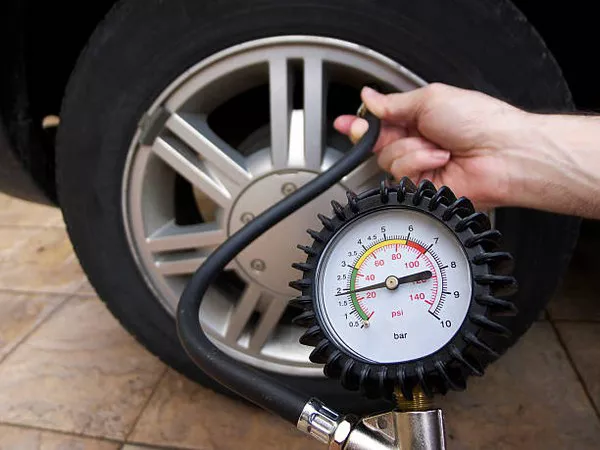Fuel pressure gauges are essential components in automotive and mechanical systems, providing vital information on the pressure within fuel lines to ensure optimal engine performance and safety. An accurately functioning fuel pressure gauge helps detect fuel system malfunctions early, prevents engine damage, and improves fuel efficiency. But how can you be certain your fuel pressure gauge is operating correctly? This article outlines 11 signs that your fuel pressure gauge is working properly, integrating key concepts of instrumentation technology and pressure measurement principles.
1. Consistent and Stable Readings
A properly working fuel pressure gauge delivers stable readings that do not fluctuate wildly under steady engine conditions. When your vehicle is idling or running at a constant speed, the fuel pressure gauge should display a steady value that corresponds to the manufacturer’s specifications. Sudden or continuous oscillations in the reading can indicate gauge malfunction or issues in the fuel line.
2. Accurate Calibration Against Known Standards
One hallmark of a reliable gauge is proper calibration. A gauge should be periodically checked against a certified standard, such as a piston gauge or a absolute pressure gauge, to ensure its readings match expected pressure values. Inaccurate calibration can cause engine inefficiency or misdiagnosis of fuel system issues.
3. Quick Response to Pressure Changes
A functional fuel pressure gauge must respond promptly to changes in fuel line pressure. Whether you accelerate, decelerate, or switch the engine off, the gauge needle or digital display should reflect these transitions smoothly and rapidly. Delayed or sluggish response can indicate internal gauge damage or clogging in the pressure sensing port.
4. No Leakage or Fuel Contamination Around the Gauge
Physical integrity is crucial for gauge reliability. Inspect the fuel pressure gauge for any signs of leaks, fuel seepage, or dirt accumulation. Leaks can damage the sensitive internal components and cause erroneous readings. A well-maintained capsule pressure gauge or other types of pressure gauges should remain sealed and clean at all times.
5. Clear and Legible Display
Whether your gauge is an analog model like a bourdon tube pressure gauge or a digital pressure gauge, the display must be easy to read under all lighting conditions. Cloudy lenses, faded numbers, or malfunctioning backlights compromise your ability to monitor fuel pressure effectively.
6. Absence of Mechanical Noise or Vibrations
While operating, a good fuel pressure gauge should run silently. Clicking, buzzing, or rattling noises often point to internal mechanical issues, such as worn-out gears or damaged springs, particularly in analog gauges. Excessive vibrations can also disrupt the internal mechanics and affect accuracy.
7. Proper Integration with the Fuel System
The gauge must be installed correctly in line with the fuel system, avoiding excessive bends, restrictions, or incompatible fittings. Integrated pressure gauges designed specifically for fuel systems offer better accuracy and durability. Proper installation ensures consistent pressure transmission to the sensing element without delays or damping.
8. Resistance to Environmental Conditions
A reliable fuel pressure gauge withstands environmental stressors such as temperature extremes, humidity, and vibrations common in automotive applications. For instance, a glycerin pressure gauge uses damping fluid to stabilize the needle in such environments. Similarly, robust seals prevent ingress of dust or moisture that can cause malfunctions.
9. Verification via Cross-Check Methods
Corroborate the gauge reading using secondary methods or instruments like a u-tube gauge or a compound gauge. Consistent results between different devices indicate proper gauge function, while discrepancies warrant further inspection or recalibration.
10. Smooth Needle Movement Without Sticking
In analog fuel pressure gauges, the needle should move smoothly across the dial without sticking or jumping. Sticking needles indicate internal contamination or mechanical wear, which could lead to misleading pressure readings. Regular maintenance and cleaning help preserve smooth operation.
11. Long-Term Reliability and Durability
A well-manufactured fuel pressure gauge maintains its accuracy and mechanical integrity over time. Durable materials and proven designs such as those found in integrated pressure gauges or compound pressure gauges ensure the gauge can withstand long-term use in harsh conditions without degradation.
Conclusion
Monitoring fuel pressure accurately is crucial to the efficient operation of engines and fuel systems. Recognizing these 11 signs that your fuel pressure gauge is working properly can prevent costly breakdowns and ensure safety. Regular calibration, proper installation, and periodic inspections are necessary to maintain gauge performance. Leveraging knowledge of various pressure gauges and their operating principles empowers engineers and technicians to make informed decisions regarding maintenance and replacement.
FAQs
How often should I calibrate my fuel pressure gauge?
Calibration frequency depends on usage and operating environment but generally should be performed annually or after any suspected inaccuracy or mechanical impact. Using reference instruments like piston gauges or absolute pressure gauges ensures accuracy.
Can a digital pressure gauge be more reliable than an analog one?
Digital pressure gauges offer advantages like higher precision, easier readability, and advanced features such as data logging. However, they require stable power sources and can be sensitive to electrical interference, whereas analog gauges tend to be more rugged in certain conditions.
What types of fuel pressure gauges are commonly used in automotive systems?
Common types include bourdon tube pressure gauges, capsule pressure gauges, and integrated pressure gauges designed specifically for fuel lines. Selection depends on pressure range, accuracy requirements, and environmental factors.
How can environmental conditions affect fuel pressure gauge performance?
Extreme temperatures, moisture, vibration, and contamination can impair gauge function. For instance, glycerin-filled gauges help dampen vibrations, while sealed designs prevent moisture ingress, ensuring longevity and accuracy.
Is it possible to repair a faulty fuel pressure gauge?
Minor issues such as stuck needles or dirty internals can sometimes be fixed through cleaning or recalibration. However, major mechanical failures or damage usually require replacement of the gauge to guarantee safety and accuracy.

